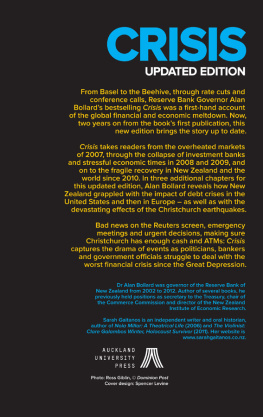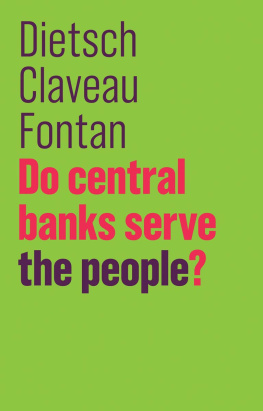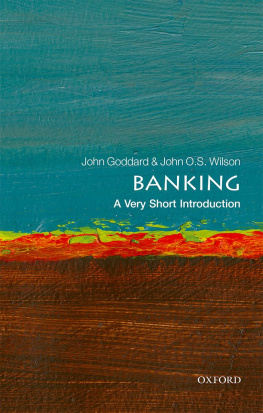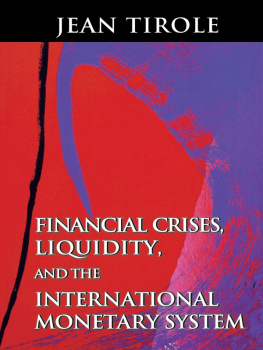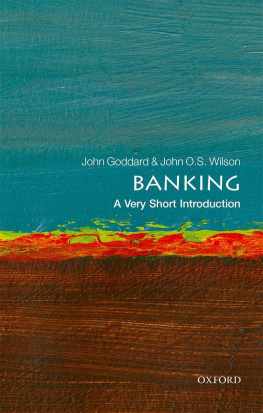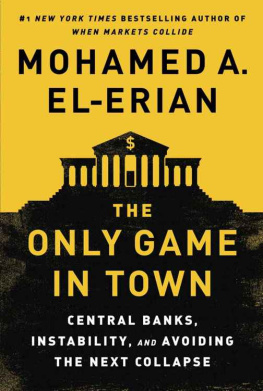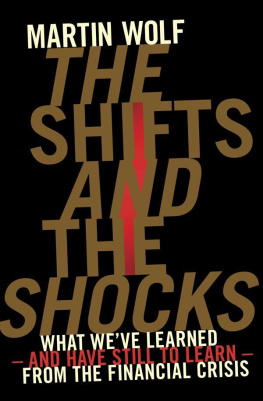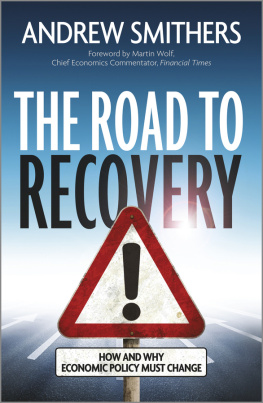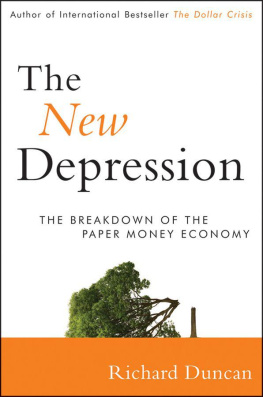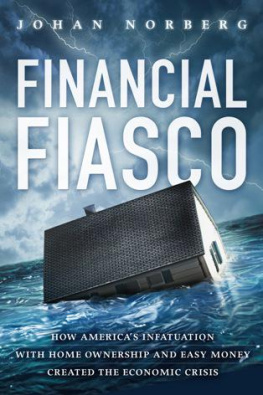The Global Economic System
How Liquidity Shocks Affect Financial Institutions and Lead to Economic Crises
George Chacko
Carolyn L. Evans
Hans Gunawan
Anders L. Sjman
Vice President, Publisher: Tim Moore
Associate Publisher and Director of Marketing: Amy Neidlinger
Executive Editor: Jim Boyd
Editorial Assistant: Pamela Boland
Senior Marketing Manager: Julie Phifer
Assistant Marketing Manager: Megan Colvin
Cover Designer: Alan Clements
Managing Editor: Kristy Hart
Project Editor: Betsy Harris
Copy Editor: Geneil Breeze
Proofreader: Williams Woods Publishing
Indexer: Lisa Stumpf
Senior Compositor: Gloria Schurick
Manufacturing Buyer: Dan Uhrig
2011 by Pearson Education, Inc.
Publishing as FT Press
Upper Saddle River, New Jersey 07458
This book is sold with the understanding that neither the author nor the publisher is engaged in rendering legal, accounting, or other professional services or advice by publishing this book. Each individual situation is unique. Thus, if legal or financial advice or other expert assistance is required in a specific situation, the services of a competent professional should be sought to ensure that the situation has been evaluated carefully and appropriately. The author and the publisher disclaim any liability, loss, or risk resulting directly or indirectly, from the use or application of any of the contents of this book.
.
Company and product names mentioned herein are the trademarks or registered trademarks of their respective owners.
All rights reserved. No part of this book may be reproduced, in any form or by any means, without permission in writing from the publisher.
Printed in the United States of America
First Printing June 2011
ISBN-10: 0-13-705012-7
ISBN-13: 978-0-13-705012-3
Pearson Education LTD.
Pearson Education Australia PTY, Limited.
Pearson Education Singapore, Pte. Ltd.
Pearson Education North Asia, Ltd.
Pearson Education Canada, Ltd.
Pearson Educacin de Mexico, S.A. de C.V.
Pearson EducationJapan
Pearson Education Malaysia, Pte. Ltd.
Library of Congress Cataloging-in-Publication Data
The global economic system : how liquidity shocks affect financial institutions and lead to economic
crises / George Chacko ... [et al.].
p. cm.
ISBN 978-0-13-705012-3 (hbk. : alk. paper)
1. International finance. 2. Liquidity (Economics) 3. Financial crises. I. Chacko, George.
HG3881.G57534 2011
332'.042dc22
2011010482
George dedicates this to Hemu, Manju, Leah, and Shreya.
Carolyn thanks her father and mother for all their support.
Hans dedicates this book to his loving parents.
Anders is, as always, in constant awe of Alvar.
Acknowledgments
George Chacko and Carolyn Evans would like to gratefully acknowledge financial support from the Leavey School of Business at Santa Clara University.
About the Authors
George Chacko is Associate Professor of Finance at Santa Clara Universitys Leavey School of Business and formerly Associate Professor at Harvard Business School, Managing Director at State Street Bank, and Chief Investment Officer at Auda Alternative Investments. He holds a Ph.D. and M.A. in Business Economics from Harvard University and a B.S. from MIT.
Carolyn L. Evans is Associate Professor of Economics at Santa Clara University. She has worked at the Federal Reserve Bank of New York, the Federal Reserve Board of Governors, and the White House Council of Economic Advisers. She holds a Ph.D. and M.A. in Economics and a B.A. in East Asian Languages and Civilizations, all from Harvard University.
Hans Gunawan is Senior Financial Analyst at Skyline Solar and formerly a manager of financial planning and analysis at JAPFA. He holds an MBA from Santa Clara University and a B.S. from University of California, Berkeley.
Anders Sjman is Vice President of Communications at Voddler. He was formerly Senior Researcher for Harvard Business Schools Paris-based Europe Research Center. He holds an M.Sc. from the Stockholm School of Economics.
Chapter 1. Motivation for Understanding Liquidity Risk
The global economic crisis of 2008 and 2009 caught many of the most astute investors in the financial markets by surprise. While only 49 hedge funds failed during all of 2007, 344 hedge funds failed during just the third quarter of 2008, and another 778 hedge funds failed during the fourth quarter of 2008. Similarly, while only 3 banks failed in 2007, 25 banks failed in 2008, and 140 failed in 2009. Endowment funds, the financial backbone of private universities, which had posted stellar investment results throughout the 2000s, had an investment return of -19% during fiscal 2009. The four biggest funds, with widely acclaimed investment managers, posted returns of -27% (Harvard), -25% (Yale), -27% (Stanford), and -23% (Princeton). Private equity funds lost 15% in 2008.
As a description of the money management industry during 2008-2009, one of the most widely circulated quotes was provided by the sage of Omaha, Warren Buffet, who once said you only find out who is swimming naked when the tide goes out. So how did some of the smartest investors, who had generated outsized returns for a long time with their skills, get caught flat-footed by the largest financial crisis the world had seen in several decades? Were they all in reality swimming naked?
1.1 Peso Problem
In his famous quote, Buffet is referring to a phenomenon known in academic circles as a peso problema term commonly attributed to Nobel laureate Milton Friedman for comments he made about trading in the Mexican peso in the early 1970s. At the time, the exchange rate between the U.S. dollar and the Mexican peso was fixed at that time as both countries were following the Bretton Woods Agreements. However, looking at interest rates on government bonds in Mexico and comparing them to interest rates on similar-maturity government bonds in the United States, one found that the interest rates in Mexico were far higherdespite the fixed exchange rate. This posed a bit of a puzzle. Investors could borrow U.S. dollars and pay a low interest rate, convert these dollars into pesos, and then invest the pesos into Mexican government bonds and earn a high interest rate. When the Mexican bonds matured, the investor could simply convert the peso principal and interest back into dollars at the same exchange rate that he did the initial conversion. He could then pay back the dollar borrowings and he would be left with a profit, equal to the interest rate differential between Mexican and U.S. interest rates times the principal amount borrowed. In modern terms, this is known as a carry trade. However because the exchange rate was fixed, there was no risk in this carry trade. Therefore the profit from the carry trade could be earned with no riska condition that financial economists refer to as an arbitrage, or free money. How could this prevail in the financial markets? In trying to explain this phenomenon, Friedman noted that perhaps the interest rate differential between the two countries reflected a hidden risk factor that no one could observe in financial market data because the downside effects of this risk had not occurred yet. He speculated that this risk factor was the possibility of a devaluation of the Mexican peso. And sure enough, in August 1976 the peso was allowed to float against the dollar, and the peso promptly fell 46%.
1.2 Liquidity RiskThe Peso Problem of Our Time
In this book, we argue that there was a peso problem during the period leading up to the global economic crisis of 2008-2009. And we also argue that it was an extremely pervasive peso problem, touching our entire society. It is present in every market (both financial and nonfinancial), it affects most financial institutions ranging from banks to hedge funds, it has always been there, and it will always continue to be there. This latent risk factor is


